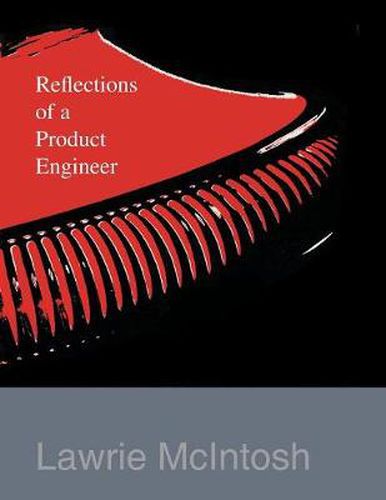Readings Newsletter
Become a Readings Member to make your shopping experience even easier.
Sign in or sign up for free!
You’re not far away from qualifying for FREE standard shipping within Australia
You’ve qualified for FREE standard shipping within Australia
The cart is loading…






This title is printed to order. This book may have been self-published. If so, we cannot guarantee the quality of the content. In the main most books will have gone through the editing process however some may not. We therefore suggest that you be aware of this before ordering this book. If in doubt check either the author or publisher’s details as we are unable to accept any returns unless they are faulty. Please contact us if you have any questions.
Because of its content this book would be especially suitable as required reading for post secondary and post graduate industrial design students. CHAPTER 1 - LAYING THE FOUNDATION At an early age McIntosh displayed an interest in design, an example of which is an experiment harnessing the earth’s magnetic field. After high school and a degree course in mechanical engineering he was employed briefly in product development. His keen interest in product design prompted him to accept a scholarship to The Institute of Design in Chicago. On staff were some of the original instructors from the German Bauhaus, from which the institute had evolved. While studying for his M.S. degree McIntosh performed a fully described task for guest lecturer Buckminster Fuller. CHAPTER 2 - PHILOSOPHICAL DESIGN PRINCIPLES The practice of industrial design fifty years ago was more difficult, first because of its novelty, and also because all drafting was done manually. There were, of course, no computers with design capabilites. An unorthodox approach to design, concentrating on one well developed concept rather than a myriad of sketches, is described; and the resulting necessity of presenting accurate perspective drawings is demonstrated. CHAPTER 3 - THE POLAR DESIGN GRAPH This concept was developed to illustrate what constitutes good and bad design, and how they might relate to each other with respect to cost. Both are available at prices ranging from high to low. Design value and price are unrelated and mutually exclusive. CHAPTER 4 - ANCEDOTAL EVIDENCE First there is some advice for students, then the relating of ancedotal experiences in the fields of industrial design and expert witnessing in court litigation. There is also reference to experience as an instructor in colleges and universities and the nature of the knowledge imparted to students. CHAPTER 5 - RETIREMENT This chapter recounts some activites following retirement; but, mostly, it illustrates a retrospective exhibition of an illustrious design career. CONCLUSION There are no regrets in retirement for various listed reasons.
$9.00 standard shipping within Australia
FREE standard shipping within Australia for orders over $100.00
Express & International shipping calculated at checkout
This title is printed to order. This book may have been self-published. If so, we cannot guarantee the quality of the content. In the main most books will have gone through the editing process however some may not. We therefore suggest that you be aware of this before ordering this book. If in doubt check either the author or publisher’s details as we are unable to accept any returns unless they are faulty. Please contact us if you have any questions.
Because of its content this book would be especially suitable as required reading for post secondary and post graduate industrial design students. CHAPTER 1 - LAYING THE FOUNDATION At an early age McIntosh displayed an interest in design, an example of which is an experiment harnessing the earth’s magnetic field. After high school and a degree course in mechanical engineering he was employed briefly in product development. His keen interest in product design prompted him to accept a scholarship to The Institute of Design in Chicago. On staff were some of the original instructors from the German Bauhaus, from which the institute had evolved. While studying for his M.S. degree McIntosh performed a fully described task for guest lecturer Buckminster Fuller. CHAPTER 2 - PHILOSOPHICAL DESIGN PRINCIPLES The practice of industrial design fifty years ago was more difficult, first because of its novelty, and also because all drafting was done manually. There were, of course, no computers with design capabilites. An unorthodox approach to design, concentrating on one well developed concept rather than a myriad of sketches, is described; and the resulting necessity of presenting accurate perspective drawings is demonstrated. CHAPTER 3 - THE POLAR DESIGN GRAPH This concept was developed to illustrate what constitutes good and bad design, and how they might relate to each other with respect to cost. Both are available at prices ranging from high to low. Design value and price are unrelated and mutually exclusive. CHAPTER 4 - ANCEDOTAL EVIDENCE First there is some advice for students, then the relating of ancedotal experiences in the fields of industrial design and expert witnessing in court litigation. There is also reference to experience as an instructor in colleges and universities and the nature of the knowledge imparted to students. CHAPTER 5 - RETIREMENT This chapter recounts some activites following retirement; but, mostly, it illustrates a retrospective exhibition of an illustrious design career. CONCLUSION There are no regrets in retirement for various listed reasons.